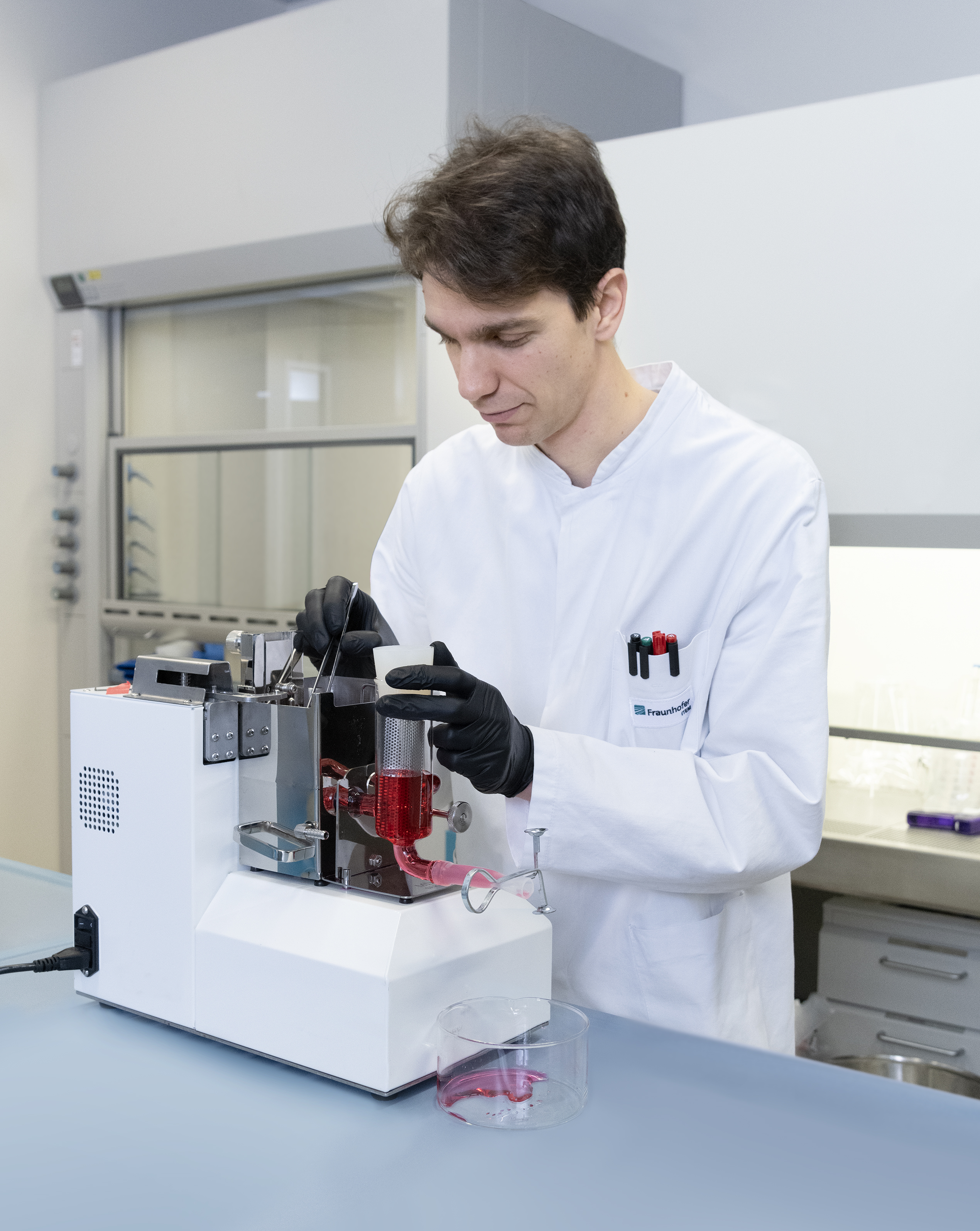Project iGUARD wins the SPRIND Challenge “Broad-Spectrum Antivirals”


There are still no effective drugs for most viral diseases. Antiviral therapies are therefore urgently and rapidly needed. However, the development of therapeutics can take decades. In the iGUARD (integrated Guided Ultrafast Antiviral RNAi Drug Development) project, a team of researchers from Fraunhofer ITEM and Hannover Medical School (MHH) has set the goal of developing customized therapies as quickly as possible. The iGUARD project has already been funded three times by the German Federal Agency for Breakthrough Innovation (SPRIND) as part of the SPRIND Challenge “Broad-Spectrum Antivirals” and has now been recognized as one of the winners of the innovation competition.
The researchers are focusing on RNA-based active substances that can be rapidly adapted to different viruses to provide protection against emerging viral infectious diseases. To this end, they are focusing on the parainfluenza virus as a first step. The aim is to use what is known as RNA interference (RNAi) to prevent the virus from replicating and spreading in the body. RNAi is a natural mechanism in our cells for switching off genes in a targeted manner. The research team has developed suitable RNAi building blocks that specifically degrade different sections of the parainfluenza virus genome that the virus needs to replicate. The efficacy and safety of these RNAi candidates have been successfully tested on human lung tissue slices, in 3D cell cultures from human lung epithelium and in animal models. The RNAi candidates were able to suppress the parainfluenza virus by 95 percent in vitro and in vivo. The researchers have also developed an inhalable formulation to deliver the therapeutic RNA directly to the target cell infected by the virus in the lung. Studies on the ex-vivo model of the isolated perfused lung showed that the drug can be nebulized well and reaches the lung epithelium as desired.
Now, the technology is being further developed to be tested in clinical trials. The long-term goal is to use the developed iGUARD platform to construct corresponding RNA therapeutics for other known viral diseases. Ultimately, the aim is to quickly adapt active substances to unknown, newly emerging virus types and thus be able to develop customized therapies very quickly.
The project is a collaboration between the MHH - specifically the Institute of Experimental Hematology (Prof. Axel Schambach, Philippe Vollmer Barbosa) and the Clinic for Hematology, Hemostaseology, Oncology and Stem Cell Transplantation (Prof. Adrian Schwarzer) - and the Fraunhofer ITEM Division of Preclinical Pharmacology and Toxicology (Prof. Armin Braun, Philippe Vollmer Barbosa).
 Fraunhofer Institute for Toxicology and Experimental Medicine
Fraunhofer Institute for Toxicology and Experimental Medicine
